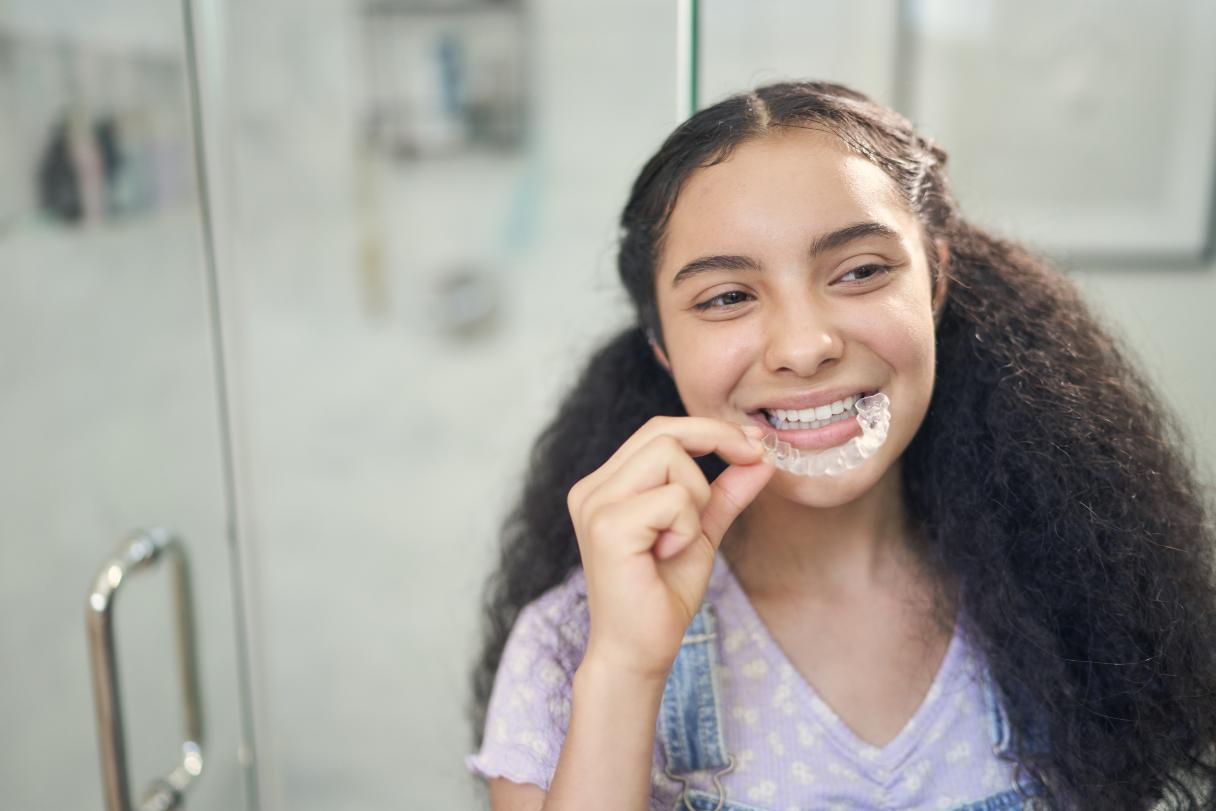Having an overbite or underbite can affect your self-confidence and lead to several health issues if left untreated. An overbite can give you the appearance of “buck" teeth, and an underbite can make your chin look like it's jutting out too far. Aesthetics aside, both can also cause serious health issues that extend beyond just your mouth if left untreated.1
Keep reading to learn the differences between an overbite vs. underbite, what causes them and what can be done to treat these dental issues.
What Is an Overbite?
An overbite is a type of malocclusion, which literally means “bad bite" in Latin.2 This is an orthodontics term for teeth that don't fit together properly when the mouth is closed. Having perfectly aligned teeth is rare without some help from orthodontics.1
It's important to note that having a small overbite is actually normal. Many people — possibly as many as 56% — have a malocclusion.3 Typically, your upper teeth should slightly overlap the bottom.
Malocclusions are typically categorized as Class I, II or III.
- A Class 1 malocclusion is characterized by a minimal overlap and considered a normal bite.
- A Class II malocclusion is an excessive overbite in which the upper teeth overlap the bottom teeth by more than two millimeters.
- A Class III malocclusion is actually a severe underbite in which the lower teeth extend beyond the upper teeth, creating a prominent protrusion.4 (We'll explore underbites in a bit.)
Causes
An overbite is usually hereditary. It can be caused by differences in size between the upper and lower jaws or a size difference between your tooth size and jaw. Other potential causes of overbite include:5
- Thumb-sucking or pacifier use past the age of 3
- Tongue thrusting
- Extra teeth, missing teeth or impacted teeth
- Abnormal tooth shape
- Jaw injuries
- Mouth or jaw tumors
- Poorly fitting dental appliances, fillings, crowns, braces and retainers
Potential side effects
Having an overbite can affect a person's mental and physical health. Research has found that malocclusion can have a significant impact on self-confidence and body image from childhood through early adulthood.6
Left untreated, an overbite can also cause:1
- Alignment issues, such as crowding or teeth that stick out — aka "buck teeth"
- Abnormal appearance of the face
- Speech difficulties, such as a lisp
- Pain or trouble chewing or biting
- Mouth breathing
- Trouble brushing properly, which increases the chance of developing tooth decay, cavities and tooth loss
- TMJ issues, such as jaw pain
What Is an Underbite?
As we noted earlier, an underbite is a Class III malocclusion. With an underbite, the lower teeth and jaw sit in front of the upper front teeth when the mouth is closed. It can cause your chin to jut out and make it look bigger or longer.5
Causes
As with overbite, underbite is often hereditary.5 It happens when the upper jaw is underdeveloped; your lower jaw is bigger than your upper jaw — or both.7
Other factors that may contribute to an underbite include:5
- Extended thumb-sucking or pacifier and bottle use
- Tongue thrusting
- Jaw injury
Potential side effects
Like with an overbite, an underbite can also take a toll on a person's self-confidence and body image. Left untreated, an underbite can also cause:5
- Abnormal face structure
- Jaw pain
- Trouble chewing
- Mouth breathing
- Sleep apnea and snoring
- Poor oral health, such as tooth decay and cavities
- Trouble swallowing8
- Gastroesophageal reflux disease (GERD)9
Diagnosis of Overbite and Underbite
A dentist or orthodontist can diagnose all types of malocclusion, including overbite and underbite. They can do this by examining your mouth and jaw and with imaging. They may use dental X-rays and/or a type of CT scan called cone-beam computed tomography (CBCT), which provides a three-dimensional view of your entire face, as well as your TMJ and airway.1
Overbite and Underbite Treatments
Getting treatment for an overbite or underbite can improve your appearance and increase your confidence. Treatment is also important for improving your oral health and preserving your smile, as well as eliminating strain on your teeth and jaw.5
An orthodontist will advise you of the best orthodontic treatment for your overbite or underbite based on age and the severity of the malocclusion.
One or more of the following treatments may be used to correct an overbite or underbite:
- Braces and clear aligners. Traditional dental braces or clear aligners can often be used to gradually realign teeth into an optimal position.1
- Surgery. If a misaligned jaw causes your overbite or underbite, your orthodontist may refer you to a maxillofacial surgeon for surgery to reposition the jaw and improve alignment.1
- Tooth extraction. If overcrowding is a problem, removing one or more teeth can make it easier to move teeth into place with braces.4
- Cosmetic treatments. Cosmetic dentistry procedures, like veneers, may help with minor tooth position and bite problems.10
Prevention and Maintenance Tips
In most cases, overbite and underbite are hereditary and not preventable. However, the earlier an overbite or underbite is treated, the better. Treatment as an adult is usually successful, but it may be more complex and take longer.5
If you have an overbite or underbite, see your dentist or an orthodontist as soon as possible. Treatment won't only improve your appearance, but also your oral health.
Maintaining good oral health is always important. Here are some tips to help you do that:
- Schedule regular dental checkups.
- Practice proper oral hygiene by brushing at least twice a day and flossing daily.
- Replace missing teeth with dental bridges or implants.
After treatment for an overbite or underbite, follow your doctor's instructions to help maintain your newly-aligned teeth. This may include wearing a retainer or other dental appliance.
CareCredit Credit Card Financing for Overbite or Underbite Treatment
Whether you're investing in overbite or underbite treatment or you're simply paying for a dental exam, the CareCredit credit card can help you pay for costs not covered by insurance.* Use our Acceptance Locator to find a dentist or orthodontist near you that accepts CareCredit to help get you on track to your perfect smile. Continue your wellness journey by downloading the CareCredit Mobile App to manage your CareCredit account, find a provider on the go and easily access the Well U blog for more great articles, podcasts and videos.
In addition to orthodontics, you can also use your CareCredit credit card for pet care, cosmetic, vision, hearing, health systems, dermatology, pharmacy purchases, spa treatments and so much more within the CareCredit network. How will you invest in your health and wellness next?
Author Bio
Adrienne Santos-Longhurst is a writer who has been covering health and lifestyle for almost two decades. Her work has appeared in Healthline, Insider, Medical News Today and more.







